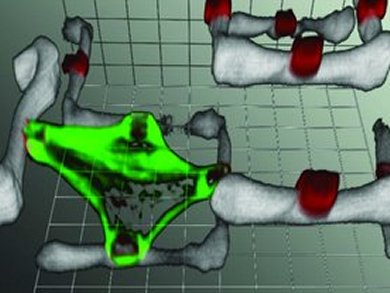Cell-culture scaffolds that mimic the complex in vivo arrangement of the extracellular matrix (ECM) have the potential to regulate cell proliferation and differentiation. Two dimensional micropatterned structures are widely used and are commercially available. Yet the 2D arrays fail to capture the structural complexity present in 3D tissues.
By using direct laser writing, Martin Bastmeyer and co-workers, Karlsruhe Institute of Technology, Germany, have created 3D scaffolds with a controlled ECM distribution. They apply sequential laser writing with two different photoresists. This forms composite–polymer scaffolds with distinct protein-binding properties that can be selectively biofunctionalized.
In principle, the minimal size of protein-binding cubes can be as small as 1 μm × 1 μm × 2 μm, located in a scaffold with 5 μm pore size. Cells cultured in these scaffolds selectively adhered to the functionalized sites, allowing for control of cell adhesion and cell shape in three dimensions for the first time.
Image: (c) Wiley-VCH
- Two-Component Polymer Scaffolds for Controlled Three-Dimensional Cell Culture
F. Klein, B. Richter, T. Striebel, C. M. Franz,G. von Freymann, M. Wegener, M. Bastmeyer,
Adv. Mater. 2011.
DOI: 10.1002/adma.201004060



